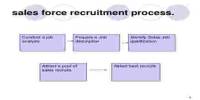Prime purpose of this assignment is to describe Impact of Advertising and Promotion on Brand Equity. Research has traditionally posited that sales promotions erode brand equity. Usually, price adapted by the manufacturer as a direct promotion method will increase the purchase willing of customer. Marketing communications may provide the means for developing strong, customer-based brand equity among marketing communication tools, advertising and price promotion have always played a pivotal role.
Impact of Advertising and Promotion on Brand Equity
















